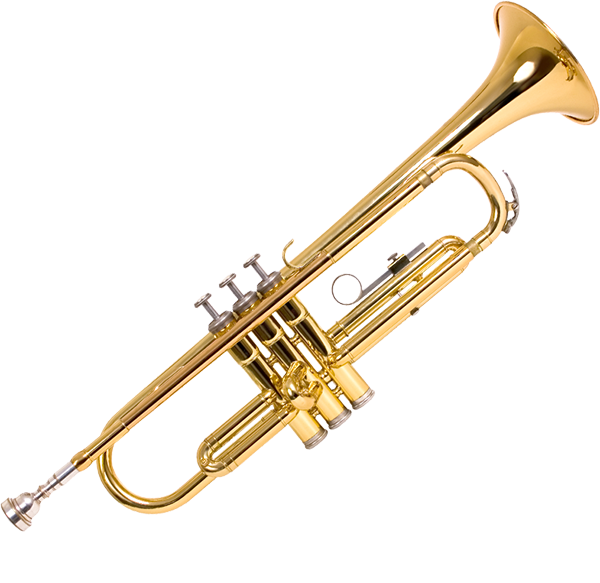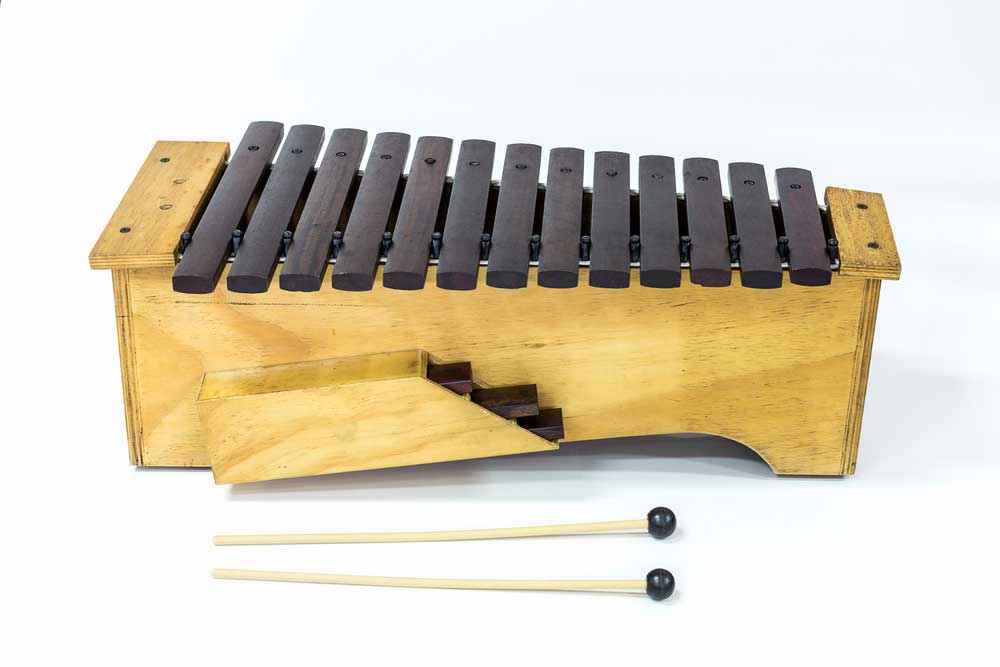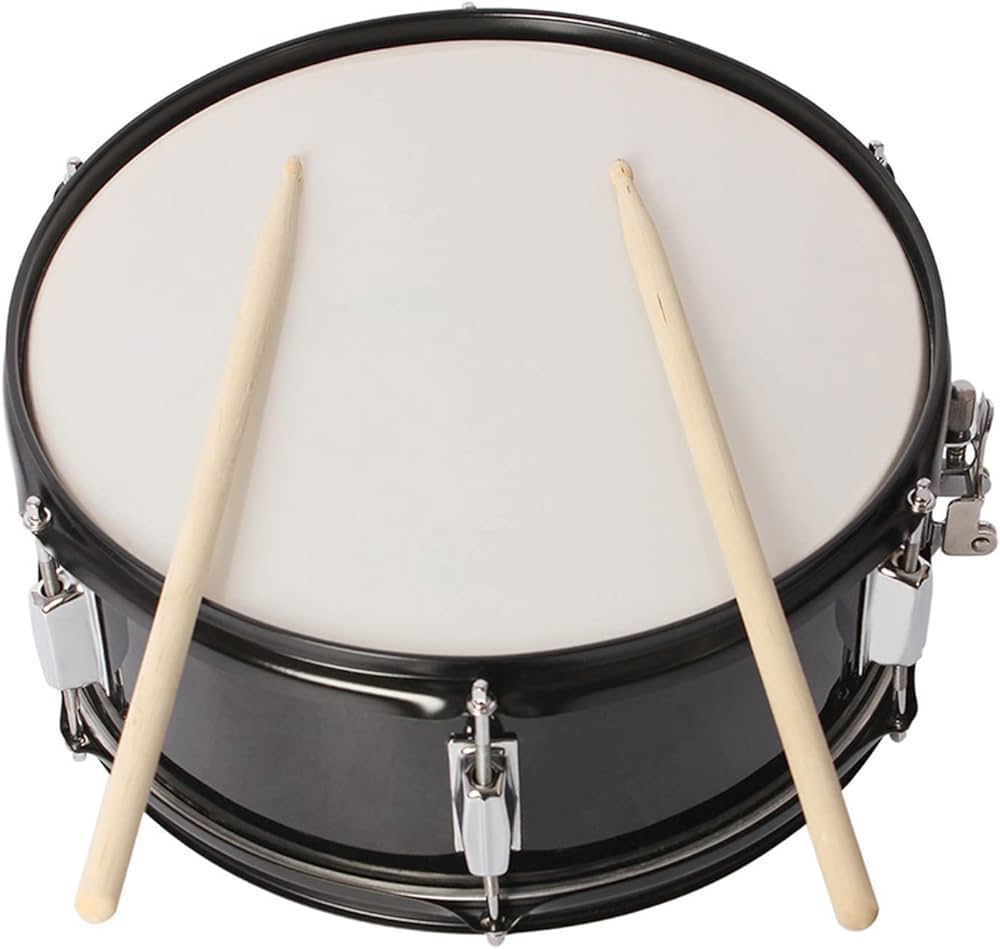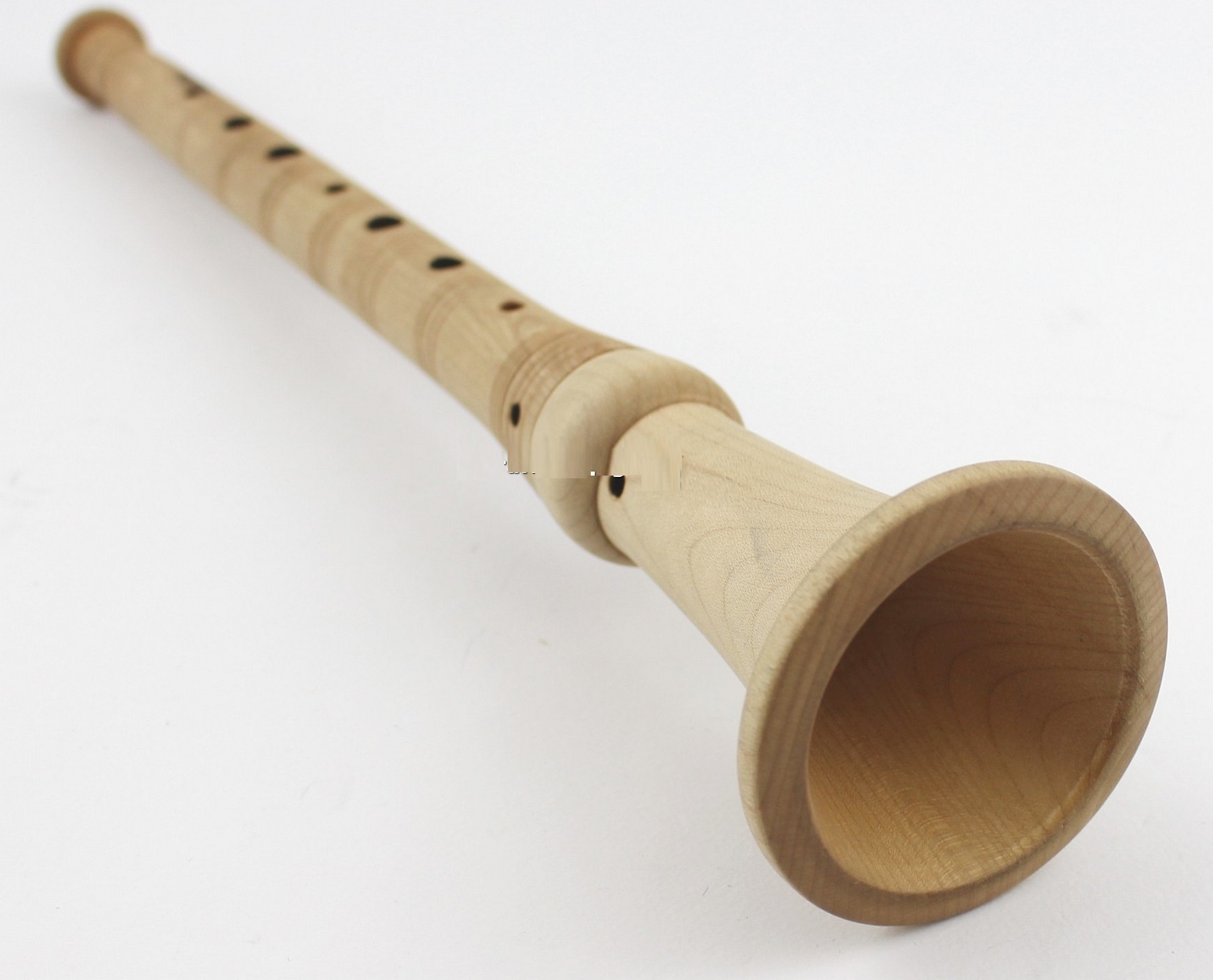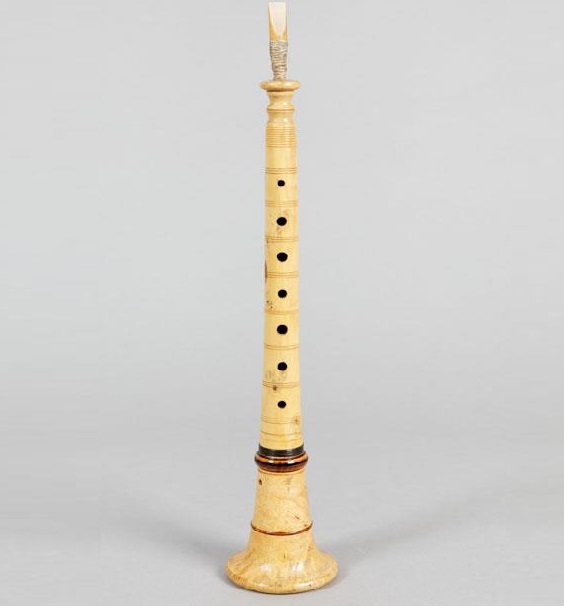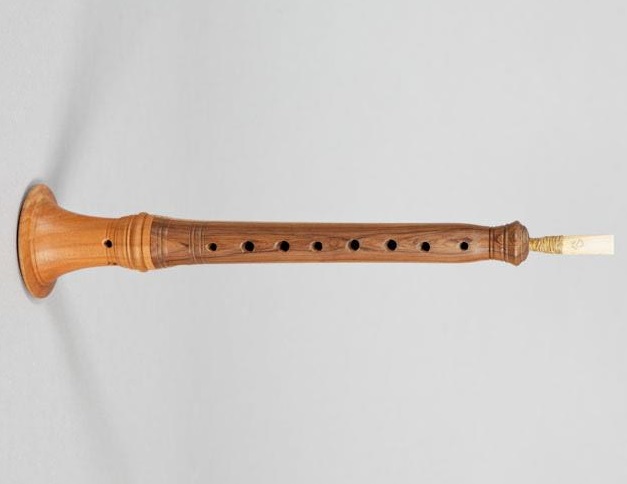Ciaramella
Woodwinds
Europe
Between 1001 and 1900 AD
Video
The ciaramella is a traditional European aerophone instrument belonging to the oboe family. It is characterized by its double reed and conical bore, which produce a sound that is both piercing and melodic. Visually, the ciaramella resembles a recorder, but its sound is distinct, lying somewhere between the oboe and the Indian punji, famously associated with snake charmers. The instrument typically consists of two main parts: the spindle and the bell, connected by a threaded tenon. The spindle features finger holes for tuning and playing, while the bell amplifies the sound. Its simplicity in construction belies its rich tonal capabilities.
The ciaramella is often referred to as the “pastoral oboe” due to its association with folk music and rural traditions. It has historically been used in festive settings, particularly during Christmas celebrations in Italy, where its unique sound complements other traditional instruments like the zampogna (Italian bagpipe). While it is primarily known for its role in Italian folk music, variations of the ciaramella exist across different regions of Italy, each contributing to its diverse musical legacy.
Type of Instrument
The ciaramella is classified as a double-reed woodwind instrument. It belongs to the broader family of aerophones and is closely related to other instruments like the shawm and modern oboe. Unlike keyed instruments such as clarinets or saxophones, the ciaramella relies on finger holes for pitch modulation. This design gives it a raw and authentic sound that has been cherished in folk traditions. Its double-reed mechanism involves two pieces of cane vibrating against each other when air is blown through them. This feature allows it to produce sharp, high-pitched tones that are characteristic of pastoral music. The absence of keys makes it less versatile than modern oboes but more suitable for traditional melodies and rhythmic patterns. In ensemble settings, it often serves as a soprano voice, complementing lower-pitched instruments like bagpipes or tambourines.
History and Origins
The history of the ciaramella dates back to at least the 12th century in Europe. Its name derives from ancient Latin words for “reed,” emphasizing its foundational material and design. Initially, it was considered a variation of the bombard, another medieval wind instrument with similar characteristics. During medieval times, the ciaramella was primarily used in musical ensembles such as Alta Cappella groups. These ensembles featured loud wind instruments for outdoor performances at courts and public events. The ciaramella’s role was often that of discantus or soprano voice, adding melodic flourishes to compositions. In Italy, particularly in Naples and southern regions like Calabria, the ciaramella became deeply embedded in local culture. It gained prominence during Christmas celebrations as part of pastoral music traditions. Often paired with the zampogna, it created harmonious fanfares that resonated with festive cheer. Over time, its distinctive sound led to its association with rural life and folk songs. Visual evidence from paintings and manuscripts suggests that variations of the ciaramella existed across Europe during Renaissance periods. Each region adapted its design to suit local musical preferences, resulting in diverse forms of the instrument.
Construction and Design
The construction of a ciaramella is relatively straightforward but requires skilled craftsmanship to achieve its unique sound quality. The instrument consists of two main parts:
Spindle: This section features finger holes for tuning and playing melodies. Typically, there are seven or eight holes on the front side and one additional hole on the back.
Bell: The flared end amplifies sound vibrations produced by the reed mechanism.
The materials used are usually wood or cane, chosen for their resonance and durability. The double reed mouthpiece is crafted from thin strips of cane that vibrate when air passes through them. These reeds are delicate and require careful handling.
Regional variations influence construction details:
In central Italy, an eight-plus-one-hole model produces a higher pitch suitable for solo performances.
Southern Italian versions have fewer holes and emphasize softer tones for accompaniment roles.
Types of Ciaramella
Several types of ciaramella exist based on regional designs:
Central Italian Ciaramella: Known for its clear and high-pitched sound, this version often dominates over accompanying instruments like zampogna.
Southern Italian Ciaramella: Produces a softer tone with fewer holes; ideal for duets or rhythmic variations.
Calabrian Model: Features an additional small mouthpiece that alters appearance without compromising tonal quality.
Each type reflects local musical traditions while adhering to fundamental design principles.
Characteristics
The ciaramella produces a bright, piercing tone that can be described as halfway between an oboe’s richness and a recorder’s clarity. Its sound is ideal for pastoral music due to its ability to evoke rural landscapes and festive atmospheres. Mastering the ciaramella requires skillful control over breath pressure and tongue movements to achieve effects like trills or staccato notes. These techniques are essential for performing traditional folk songs with sudden rhythmic changes. While capable of solo performances, the ciaramella shines in ensemble settings alongside instruments like tambourines or bagpipes. Its soprano voice complements lower-pitched counterparts, creating balanced harmonies.
Playing Techniques and Sound Modifications
The ciaramella, a double-reed instrument, requires specific techniques to produce its distinctive sound. Its playing involves a combination of controlled breath pressure and precise finger movements to navigate the spindle’s holes for tuning and melody creation. The double reed, similar to that of an oboe, demands careful handling to achieve the desired tonal quality. Players often employ techniques such as staccato and legato to enhance musical expression, particularly in central Italy where the eight-plus-one-hole model is prevalent. This version allows for higher-pitched sounds and intricate rhythmic variations.
In southern Italy, players favor a seven-plus-one-hole model that produces a softer tone, creating a sweet and moderate sound suited for accompaniment. Southern techniques often include rapid tongue movements to create trill-like effects, adding dynamic textures to performances. The ciaramella’s ability to adapt its sound makes it suitable for solo performances or duets with instruments like the zampogna. Additionally, players can modify the sound by adjusting the reed or altering finger pressure, enabling them to create variations in pitch and timbre.
Applications in Music
The ciaramella is deeply rooted in Italian folk music, particularly in festive and pastoral settings. It is most famously associated with Christmas traditions in Naples and other regions of Italy, where it accompanies the zampogna in evocative performances of classic holiday melodies. Its high-pitched sound complements the deeper tones of the zampogna, creating harmonious duets that evoke nostalgia during seasonal celebrations. Beyond Christmas music, the ciaramella is used in folk dances and market festivities, showcasing its versatility as an instrument. It has also found a place in Renaissance and Baroque music ensembles, where its rustic yet lively intonation adds authenticity to historical performances. In modern times, groups like Ciaramella have embraced the instrument’s unique sound for reinterpretations of Renaissance dances and melodies, blending traditional influences with contemporary arrangements.
Most Influential Players
While individual ciaramella players are not widely documented, its influence is preserved through ensembles and regional traditions. Groups such as Ciaramella have played a significant role in keeping the instrument alive by incorporating it into their performances of early music. Directed by Adam Knight Gilbert, this ensemble explores Renaissance dances and melodies using instruments like the ciaramella alongside recorders, dulcian, viola da gamba, theorbo, harpsichord, and percussion. Local folk musicians across Italy also contribute to its legacy by mastering regional variations of the instrument. These players ensure that traditional techniques and repertoire are passed down through generations, maintaining its cultural significance.
Maintenance and Care
Proper maintenance of the ciaramella is essential for preserving its functionality and sound quality. As a handcrafted instrument made from wood or other natural materials, it requires regular cleaning to prevent damage from moisture or dirt buildup. The double reed must be handled with care; players often soak it before use to ensure flexibility and optimal performance. Periodic adjustments to the reed are necessary to maintain pitch accuracy and tonal consistency. The spindle’s holes should be checked for wear or blockages that could affect tuning. Additionally, storing the ciaramella in a protective case helps shield it from environmental factors such as humidity or temperature changes that could warp its structure.
Cultural Significance
The ciaramella holds profound cultural importance in Italian traditions, particularly during Christmas celebrations. Its distinctive sound has become synonymous with festive gatherings in Naples and other regions where it accompanies the zampogna in performances of traditional carols. This pairing evokes pastoral imagery and nostalgia for simpler times. The instrument’s regional variations reflect Italy’s rich cultural diversity. Each area has developed unique adaptations of the ciaramella’s structure and playing style, showcasing local identity through music. In central Italy, its higher-pitched version dominates over accompanying instruments like the zampogna, while southern models emphasize softer tones for harmonious duets.
Historically, the ciaramella has been linked to medieval ensembles like Alta Cappella and served as a soprano counterpart to instruments like bombards. Its evolution from an accompaniment instrument to a standalone feature highlights its enduring appeal across centuries. Today, it continues to captivate audiences through folk music performances and historical reinterpretations by groups dedicated to preserving its legacy.
In conclusion, the ciaramella is more than just an ancient musical instrument; it is a symbol of Italian heritage that bridges past traditions with contemporary artistry. Through meticulous playing techniques, thoughtful care, and cultural reverence, this pastoral oboe remains an integral part of Italy’s musical tapestry.
FAQ
What is the history of the Ciaramella?
The Ciaramella is an Italian double-reed woodwind instrument dating back to the Middle Ages. It evolved alongside the zampogna (bagpipe) and was widely used in folk and pastoral music. Played mainly in Southern Italy, it has a rich tradition in religious and festive settings. Over time, it became a symbol of Italian folk heritage.
What are the characteristics and sound of the Ciaramella?
The Ciaramella is a small, conical-bore, double-reed instrument with a piercing, bright sound. It resembles the shawm and produces a loud, reedy tone suitable for outdoor performances. Typically made of wood, it has seven finger holes and one thumb hole. Its high-pitched, energetic timbre complements the drones of the zampogna.
How is the Ciaramella used in music?
The Ciaramella is primarily used in Italian folk and religious music, often accompanying the zampogna. It is played in traditional processions, Christmas celebrations, and festive gatherings. Its vibrant sound helps lead melodies in dance tunes and pastoral pieces. Skilled players use embellishments and ornamentation for expressive performances.
 Links
Links
References
Other Instrument
Categories

